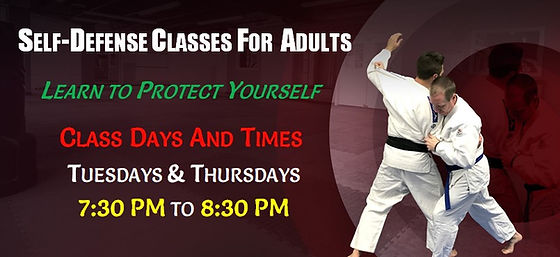
You have a variety of options when it comes time to choose a training program if you are interested in the KCPD. You have the option of choosing from Recruit training, Professional Training, Drivers Training, or the Leadership Academy. Here are some key features for each program. Continue reading to learn how each program could benefit you. These tips will help you get maximum benefit from your training.
Recruit training
To qualify for Kansas City Police Academy recruit training, all interested applicants must take a polygraph examination. The applicant must have a high-school diploma or GED and be at least 21 years of age. Additionally, they must be at least 21 years old to be considered a citizen or resident of the United States. Potential officers must be physically and mentally fit and pass a background check, psychological and medical exam. After completing their training they will become a sworn KCPD official.
The 174th entrant officer class of the Kansas City Police Academy is currently in the process of preparing for the field. The Missouri Department of Public Safety's Peace Officer Standards and Training program has certified the academy’s instructors. They are also law enforcement veterans with a lot of practical experience. Recruit training at the Academy requires a high level of dedication and commitment to the police profession.

Professional training
The Kansas City Police Department offers professional training in a variety of fields, including criminal investigation and patrol. While officers in the department start their careers as patrol officers, there are many opportunities to progress. The department also employs special units, including sex crime, domestic violence, vehicular crimes, and crimes against children and gang violence. The department also offers regular training for the general public. Women might be interested in the Women Safety Seminar.
The academy's instructors are certified through the Missouri Department of Public Safety's Peace Officer Standards and Training program. This program helps officers acquire the required qualifications to work in law enforcement. For eligibility to the Academy, applicants must register with a law enforcement agency. Non-POST applicants are eligible to be employed in full by a police force between the beginning of the Academy and their field training.
Drivers training
During their first year in the police academy, all new recruits to the KCPD are required to complete 40 hours driver training. This includes classroom instruction, supervised driving and road supervision. Students are also provided with information about vehicle registration and insurance by PAL instructors. The academy believes strongly in driver training and hopes to see some of its student drivers join the force. What can new recruits do to make the most of their experience? Let's examine some ways that driving training at KCPD can be a positive experience.
The Kansas City Police Department runs the academy. Continuing education classes, driver's training, firearms training, and traffic safety courses are available through the academy. These classes can also be attended by non-KCPD officers. The academy charges a fee to train non-KCPD personnel, and in fiscal years 2013 and 2014, more than 1,100 non-KCPD participants attended classes. The academy also rents out its facilities to outside law enforcement agencies, such as the Jackson County Department of Corrections, the U.S. The Platte County Sheriff's Department is also covered by the Platte County Postal Inspectors OIG.

Leadership academy
In the Leadership Academy at the Kansas City Police Department, officers develop the necessary skills and attributes to be a successful leader. Participants learn how to effectively communicate with others and develop leadership strategies. They also engage in a series of practical exercises designed to reflect real-world situations and help them become more effective police officers. Six common calls for service are also taught at the academy.
The workshop in the Kansas City Police Department is led by Arbinger and other leading thinkers. FOP officers and department heads at the KCPD make up the group of participants. The workshop is also attended by neutral people. Although it starts off hostile, the atmosphere quickly becomes friendly. Participants reported that they learned a lot from the program and were eager to apply it to their own work. Overall, the workshop was a success in improving officer morale, motivation, productivity, and overall quality of life. It also helped improve relationships with local residents.
FAQ
What is the best self-defense strategy?
Avoiding an attack is the best way to protect yourself. If you are attacked, then run away as fast as possible. This will give you time to think of a better defense strategy.
Use any defensive techniques that you know if you are unable to escape. These include kicks and punches. You can also grab your attacker’s arms or legs to stop him attacking you further.
If none these options work, then you need to use every tool at your disposal. The best weapon to use for this purpose are your naked hands. However, if you do not know how to use them properly, then you should consider learning some other form of self-defense first.
What are some self defence tips for women in the workplace?
Self-defense is about being able to respond quickly. This means you must be ready for anything.
Training with a friend is one of the most rewarding things you can do. Training with a friend allows you to practice together and improve your technique.
Another tip is that you should practice with something heavier. If you're attacked, you're more likely to strike your attacker harder if the object you are holding is heavy.
How do you stay safe even if you can't protect yourself physically?
If you are not physically able to defend yourself from an attacker, then you should find someone who is.
You might need to ask someone for help. You may need to call 911. If you don't act, you may die.
You can also call your local shelter dealing with domestic violence. Many shelters offer safety planning classes to teach women how to protect themselves.
Can I be charged with using my stungun?
No. Stun guns have been deemed "less lethal" weapons. They can cause no serious injury, making them less lethal.
However, if you accidentally hit someone with your stun gun, you could still face charges.
Statistics
- Some people walk into a gym thinking they are going to become the best by training whenever they like and not putting 100% effort in. (budodragon.com)
- Verbal harassment was the most common form, but 51 percent of women said they were touched or groped in an unwelcome way, while 27 percent of women survived sexual assault. (healthline.com)
- The Rape, Abuse & Incest National Network reports that 70 percent of sexual violence cases aren't committed by random strangers in a dark alley but by people we know: friends, family, partners, co-workers, etc. (healthline.com)
- Saying this, Self defense 101 would be the importance of situational awareness, which can never be replaced by the finest of martial arts, because it is this that would help you to avoid any likely attacks in the first place. (worldofselfdefense.com)
External Links
How To
What type of self defense should I learn?
Self-defense is a broad term that covers a wide range of options. There are many methods of self-defense. These are the most popular:
-
Boxing – Boxing is a great option for self-defense as it trains you how to fight with your hands. Although most people believe only men can fight, boxing is possible for women. Boxing can be learned by women through a variety of methods including private lessons, gyms and online courses.
-
Wrestling: Many people believe wrestling isn't real, but it is. In fact, it was once considered the national pastime of America. Private lessons, gyms and online classes are all available for women who want to learn how to wrestle.
-
Jujitsu (Jujitsu) - Jujitsu helps you defend yourself using your own body weight. It is very easy to learn. You will improve your balance and coordination.
-
Kickboxing - Kickboxing, which is similar to Muay Thai's, uses kicks in place of punches. It is a full-contact combat sport without rules, much like Muay Thai. Because it is easy to learn, it's a great choice for beginners.
-
Tae Kwon Do – TKD is a Korean martial arts that combines elements from karate and taekwondo. It is an excellent choice for self-defense training without the fear of hurting someone.
-
Mixed Martial Arts – MMA is a mix of different martial arts. It is a combination of Judo and Brazilian Jiu Jitsu as well as Judo, Boxing Wrestling and Wrestling. It's one of the fastest growing sports today because it's so effective.
-
Karate - Karate, a Japanese martial art, focuses on kicking techniques. It's been around for hundreds of years and has evolved over time. Today there are many different styles of karate, each with its own unique moves and training methods.
-
Knife Fighting - Knives are very useful when defending yourself. It's not necessary to be near your attacker in order for you to stab them. Only you need to know how to safely use a knife.
-
Pepper Spray - Pepper spray is a non-lethal weapon that can help you escape from an attack or stop an attack before it starts. However, pepper spray should not be used on attackers because they may get burned.
-
Firearms – Shooting an attacker is the last resort. This is usually done by trained civilians or law enforcement officers.
-
Self-Defense Classes- This class teaches all the skills you need in one place. They often cover everything from grappling, to shooting.
-
Combative Sports – Another option is to participate in combative sports such as mixed martial arts fighting, kickboxing or amateur wrestling. These sports require you to practice hard and be disciplined.
-
Martial Arts Schools – If you are serious about learning how defend yourself, then you should go to a school that teaches martial arts. Some schools offer classes that also include weapons.
-
Online Courses- You can also find many free resources online. 15) Books: Finally, some books can be very helpful. Alan Peppard's book "The Complete Idiot's Guide To Self Protection" covers all the topics.
-
Start With What You Know - Before trying to learn something new, make sure you first master what you already know. By doing so, you can avoid making mistakes that could cause you harm.
I think I will try my hand at self-defense. I have always wanted fight skills but never had the interest to actually learn them. As I get older, I may as well take care of myself and not rely on others.
I've decided to start off slow and see where things go from there. I have been thinking about joining a local gym so that I can start lifting weights. I'm still contemplating whether I should get one.